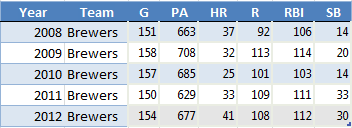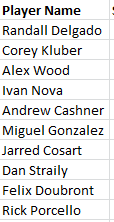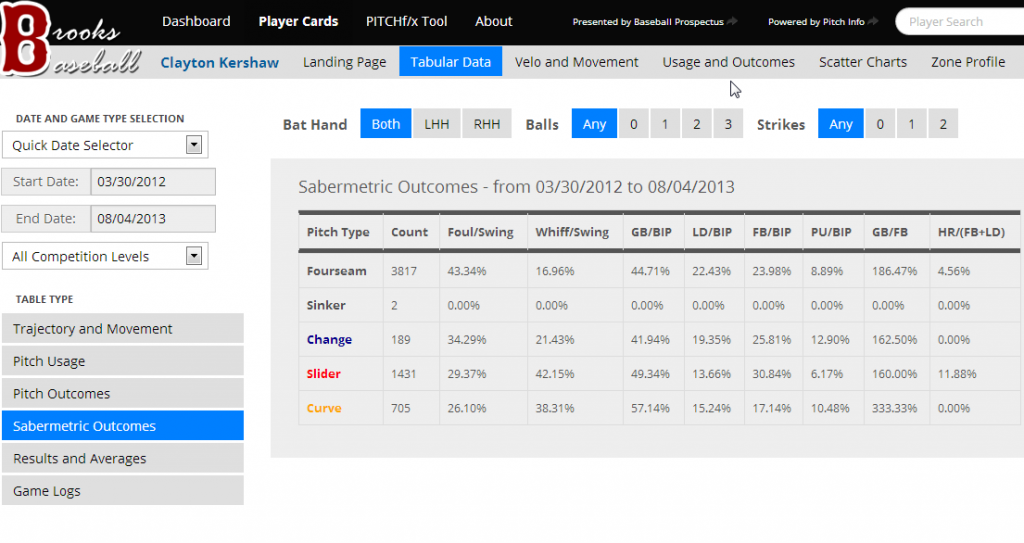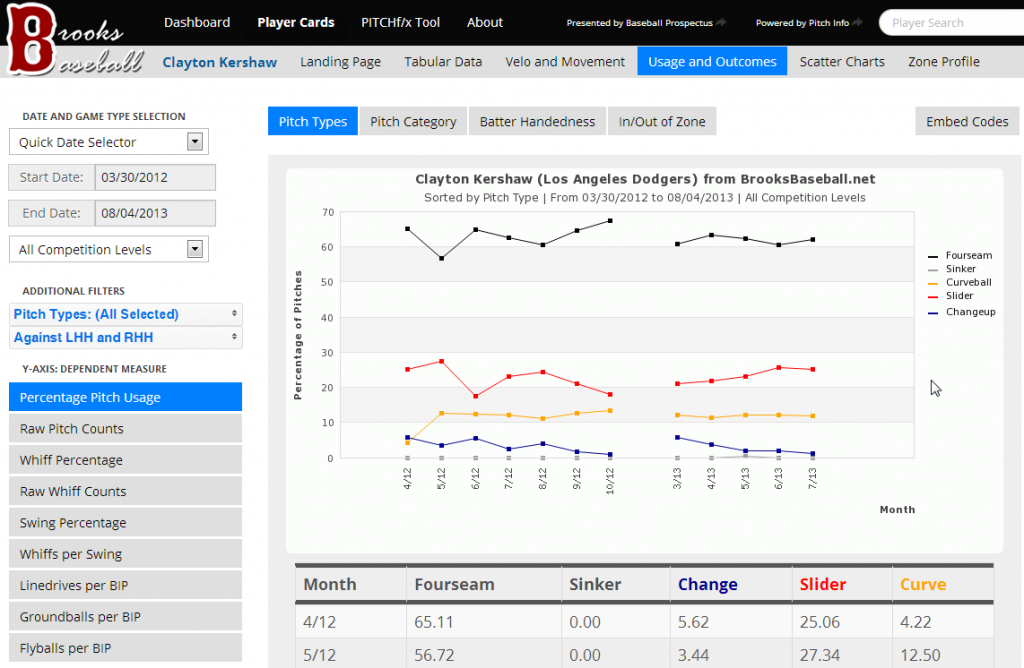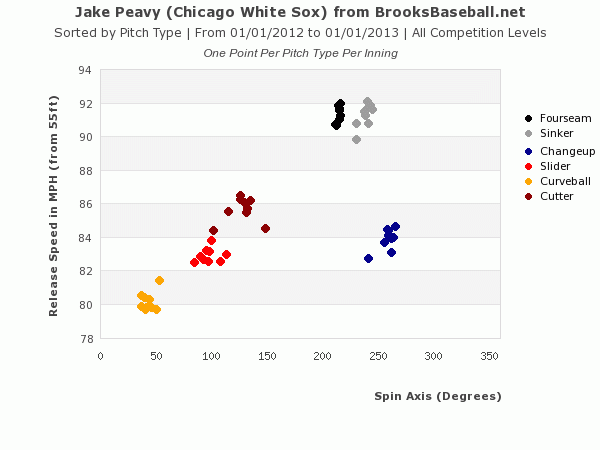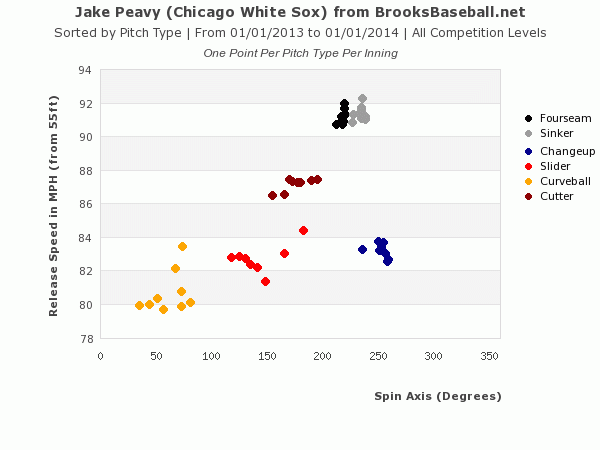I recently received a great question from one of the SFBB readers. So great, that I thought I’d answer in the form of a blog post:
We hit the waiver wire only once a week in our league. You certainly have given me great tools, but if you have my three or four hours a week to devote, with what and who do you suggest I spend this time? For instance since reading your thoughts, I really believe Olney is a must read.
~ Eddie
This seemingly simple question became complicated for me to answer. I wasn’t sure if Eddie just wanted to know who my most trusted resources are. Or if he wanted an outline of a specific process and prioritization I would use to fill three hours a week.
So I’ll take a stab at both. If you’re looking for my list of most trusted fantasy baseball resources, skip down to the bottom of this post. If you’re curious about the specific process I would employ to get the most “bang for your buck” by making the most of those three hours each week, keep moving along.
A lot of the thoughts below are just common sense. This is certainly not the most technical article I’ve ever written. But hopefully breaking down the process will make us all think more critically about how we conduct player research and how we could more efficiently use our time.
Eye Opening
I didn’t have an immediate answer to Eddie’s question. At first I laughed, thinking to myself that Eddie only has a few precious hours each week and here I sit posting 20 minute videos and 1,000 word blog posts, sucking up his valuable time. My next realization was that I don’t even have my own formal system of prioritization in place. I fly by the seat of my pants, but that’s certainly not “smart”. Maybe it’s time to think about one.
To design an effective process one must understand the exact problem. If I had to simplify the fantasy baseball problems I’m trying to address, I would summarize them as “Understanding My Team”, “Identifying Talent”, and “Learning”.
UnderStanding My Team
Before I can reap any benefit from an expert’s advice, I’ve got to have a strong understanding of my team and its place in the standings. This means:
- Assessing my team’s weaknesses and strengths (by roto category)
- Assessing my team’s position in the standings and those teams around me
- Determining players that are expendable, that I can consider dropping
Items one and two above don’t need to be done every week. They’re not really time consuming chores, but they must be done to give context to your player research. I can quickly filter through expert recommendations of sneaky stolen base specialists if I already lead that category.
I probably give a thorough look over the league standings once every two weeks or so. The standings don’t change rapidly at this point in the season, and it’s going to take time to chisel away at a 20 RBI deficit. So every couple of weeks I’ll give a good look over my situation and identify areas for improvement. Then that analysis sticks with me for the next several weeks and becomes the focus of any transactions I’ll make and the player research I’ll conduct.
Item three can’t be done in isolation. I need to have potential free agents in mind in order to conclude on who is expendable, but I always like to have an idea of who my most expendable player is. Whether it’s the least talented player on my roster or someone that is talented but simply doesn’t fit current needs, it always helps to know who’s droppable.
Identifying Talent / Player Research
The exercise above of understanding your situation and knowing the approximate value of the player I can drop will allow me to more efficiently conduct player research (and make better use of the few hours I have so I can get back to writing blog posts). To illustrate, let’s assume I’m looking to gain standings points in home runs and RBI. After looking over my roster I conclude the player I’m most likely to drop is a struggling corner infielder expected to finish the season with 20 HR and 75 RBI.
With this in mind I can do my own basic research or I begin looking for expert advice on possible pickups. To do my own research, I start with simple sorting of the free agent list to look for the following:
- Best overall players available (best preseason rank but struggling)
- Best categorical players available, year-to-date (which corner infielders have the most HR and RBI)
- Best categorical players available, last month (which corner infielders have the most HR and RBI in the last month, this might turn up players getting more playing time in the last month than earlier in the season)
- Which corner infielders are getting at bats over the last two weeks and which of them offer HR and RBI
- Which corner infielders are most frequently picked up (most major fantasy providers have ways of researching the hottest pickups)
With those results in mind, I can turn to the “experts”. I can pull up the SFBB Fantasy Baseball Expert Twitter List and scroll through the many “Weekly Pickup” columns that will surely be available. But now that I’m armed with a sense of my team, the league, and the free agents available, I’ll be able to quickly hone in on the advice and player names that make sense for my team. If an article clearly misses the mark of addressing my needs or is not consistent with the free agents available in my league, I can move along to the next piece.
I don’t have any “appointment reading” where I visit specific websites daily or weekly. I let Twitter accumulate the listings of fantasy baseball advice and I’ll scroll through the feed looking for articles that pique my interest. Similarly, podcasts are a favorite medium of mine, because I too have limited time to devote to research. But podcasts let me make productive use of time in the car or when I’m going for a jog.
Learning
One of my main goals is to learn along the way and gain exposure to new ideas, new strategies, and new lines of thinking. The benefit here is twofold. First, the more I learn, the more likely I am to win and be competitive. Second, learning is a way for me to garner enjoyment from fake baseball even if I’m not winning.
Allocating Time Between the Categories
The allocation between these three categories will fluctuate throughout the season. If you haven’t done a thorough review of your team and the league standings in a few weeks, you’ve got to allocate time to this exercise. I haven’t analyzed this, but I think it’s a safe bet that player research early in the season is more important than later in the season because acquisitions have the opportunity to affect your team for longer and accumulate more stats. It’s also the time when we know the least about playing time and batting orders. As the season progresses, if you happen to find yourself out of the running, more time can be devoted to learning about new ideas and new strategies to employ, or for expanding the horizon of your player research (looking more long-term if you’re in keeper/dynasty leagues).
My Most Trusted Fantasy BaseBall Resources
These are my personal favorites. This is not to suggest there aren’t loads of other great, or maybe even superior, analysts out there. But based upon their analytic mindsets, their ability to work strategy into their discussions, their insight, and my personal experience with them (they nailed a couple of players that really helped me out), these are the individuals I have grown to trust the most. I also find many of them funny and pleasant. I’m not a big fan of brash over-confident fantasy guy. And they’re out there.
I’m certain you won’t enjoy all of these folks. Or they just won’t “click” with you. But maybe there are one or two here that you will connect with.
| Name |
Twitter ID |
Description |
| Todd Zola |
|
Zola regularly states he would rather teach you something than manage your team for you. That’s a rarity. I love his stuff. |
Jason Collette
Paul Sporer |
|
I group these two together because while a lot of their fantasy work is done independent of each other, I mostly consume their advice via the Baseball Prospectus “Towers of Power Fantasy Hour” podcast these two do weekly. It’s my favorite fantasy baseball podcast. |
| Tristan Cockroft |
|
A lot of the content on ESPN is targeted for the masses. Advanced statistics, tables, and deep analysis scare the masses. But Tristan puts a lot of deep analysis and number crunching into his work. |
| Buster Olney |
|
He’s not a fantasy writer. But I really enjoy his work and it’s important to think about regular baseball at times and not just focus on fake baseball. He is on top of everything that happens in the game. And a lot of what happens has a fantasy impact but won’t necessarily be written about by the fantasy community. |
| Stephania Bell |
|
ESPN’s injury expert. I don’t track her success rate, but it seems high. If she’s worried about a player, despite the positive news from the team or player, she’s usually right. If I have an injured player or I’m considering acquiring one, I want to know her thoughts. |
| Corey Schwartz |
|
Corey is a cohost of the MLB.com Fantasy 411’s podcast. He works a lot of great strategy talk into the podcast. |
| Eric Karabell |
|
Karabell has an analytical approach to the game and a very conservative approach to his play/advice (give me the solid aging veteran over the sexy rookie hype machine). I like his work. |
| Mike Podhorzer |
|
Mike hosts Fangraphs’ podcast “The Sleeper and The Bust” and is very active elsewhere in the fantasy baseball world. He uses a lot of advanced statistics and other metrics, like batted ball distance, to identify potential value. |
| Ron Shandler |
|
He’s one of the legends of the industry. Perhaps the father of the analytical approach to this game. He doesn’t do much player analysis, but when he speaks, it’s worth listening to. |
Do Share
Who are your most trusted resources? Do you have a formal strategy of how to manage your time? I had never formally thought about it, but I guess there’s some semblance of thought in my practices.
Thanks. Make smart choices.

